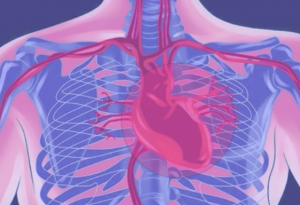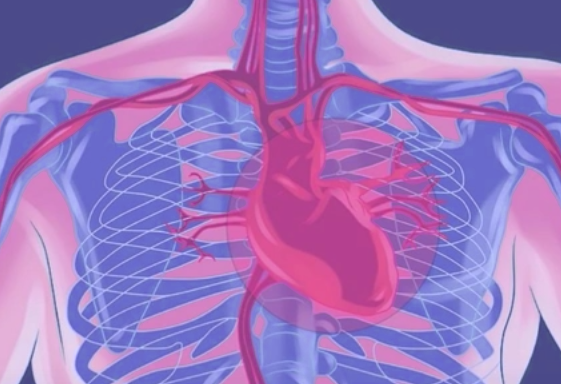Angina pectoris is a condition marked by abnormal pain in chest which occurs due to low blood flow to the heart muscles. The pain may be described as pressure, tightness, heaviness, or squeezing in the chest area. Patients have usually stated that angina pectoris is akin to a person standing on their chest. The condition may occur suddenly, it can be acute or chronic.
Even though angina pectoris is a common health issue, distinguishing it from other types of pain in chest such as discomfort caused by indigestion, etc., can be quite difficult. Patients are however advised to seek immediate medical attention whenever they experience abnormal chest pain.
Symptoms of angina pectoris
Pain associated with angina pectoris is often termed as pressure, fullness, or force in the middle part of the chest. It is somewhat similar to the pressure that one feels when the chest is held in a vice-like grip.
Some of the common signs and symptoms experienced by angina pectoris patients are listed below:
- Pain or discomfort in the chest region
- Angina pectoris pain may occur along with neck pain, shoulder pain, jaw pain, or arms or back pain.
- Nausea
- Fainting or dizziness
- Anxiety
- Shortness of breath
- Exhaustion or fatigue
- Excessive sweating
The intensity, type, and duration of angina pectoris pain can vary from one patient to another. Doctors need to distinguish between new forms of chest pain or pain that keeps changing. The latter may be indicative of unstable angina pectoris, which is a more dangerous type of chest pain that can trigger a heart attack.

Angina pectoris pain in women
Unlike heavy pressure-like pain in chest, female patients tend to experience angina pectoris as a stabbing, throbbing, or sharp pain in chest.Women may also suffer from additional symptoms like breathing problems, pain in abdomen, etc. which can lead to delayed diagnosis and treatment.
Types of Angina Pectoris
Angina pectoris is classified into three types, i.e., stable angina pain, unstable angina pain, and variant/Prinzmetal’s angina pain.
- Stable Angina Pectoris:
- It is more common than unstable angina pain. It may sometimes feel like indigestion pain.
- It is typically caused due to exercising, climbing stairs, or other kinds of excursions that cause the heart to work even harder.
- Stable angina pectoris can also be triggered by mental or emotional stress.
- The pain is short-lived and lasts for up to 5 minutes
- Use of medications and rest can help alleviate the pain more rapidly
- Stable angina pain is usually similar to chest pain experienced earlier; thus it is easy to predict
- The pain may spread to the upper limbs, back, or other areas of the body.
- Unstable Angina Pectoris:
- It occurs quite suddenly and can develop even when resting
- Pain tends to last for a longer time than stable angina pain and can last for as long as 30 minutes. The pain can be very severe.
- The associated symptoms of pain occur in a pattern distinct from stable angina pectoris
- It can be indicative of a cardiac arrest
- The pain may not subside even after rest or use of medications
- Variant/Prinzmetal’s Angina Pectoris:
- It is quite rare and occurs in just 2 percent of people who experience angina pectoris.
- It is extreme and often occurs when resting
- It is caused by spasm that affects the cardiac arteries which result in short-term reduction in blood flow to the heart.
- Medications may help alleviate variant angina pain.
Causes of angina pectoris
It is known that supply of oxygenated blood is essential for the health of the heart. It occurs when there is a reduced blood supply to the heart. This can happen due to varied reasons as discussed below.
- Presence of fatty deposits in the arteries of the heart may not necessarily be accompanied by angina pain. This is due to the fact that heart can keep functioning properly with low levels of oxygen when at rest. However, such limited oxygen supply to the heart can trigger angina pectoris during exercising or other excursions as these activities make the heart work harder.
- One of the prominent causes of reduced blood flow to the heart is coronary artery disease. Plaque deposits in the cardiac arteries can cause them to constrict and thus reduce blood supply.
- Bursting of plaques may result in formation of a blood clot in the arteries of the heart; this can reduce blood supply to the heart and lead to unstable angina pectoris.
- Unstable angina pain may also occur due to anemia
- Constriction of cardiac arteries and subsequent reduction in blood supply to the cardiac muscle can also occur due to stress, smoking, cold weather, and heavy meals.
Treatment
Patients of who experience any kind of chest pain need to visit a doctor for it to be diagnosed as angina pectoris.
Treatment of angina pectoris involves lifestyle changes; quitting smoking; eating a healthy and balanced diet; medications like nitrates, anti-coagulants, aspirin, statins, beta blockers, or calcium channel blockers, etc.; and/or a coronary bypass surgery, angioplasty, stenting, or other surgical procedures.

